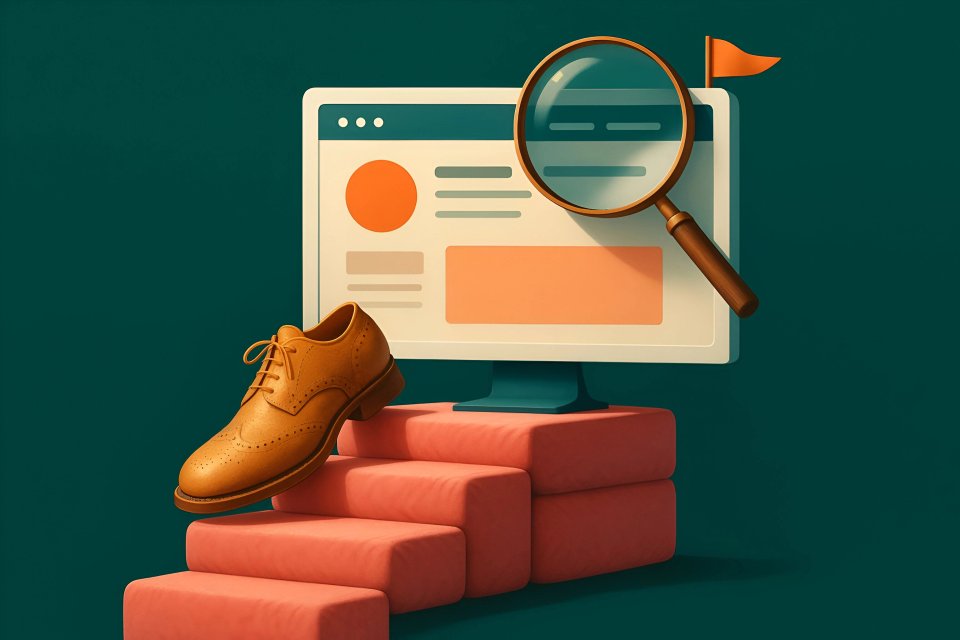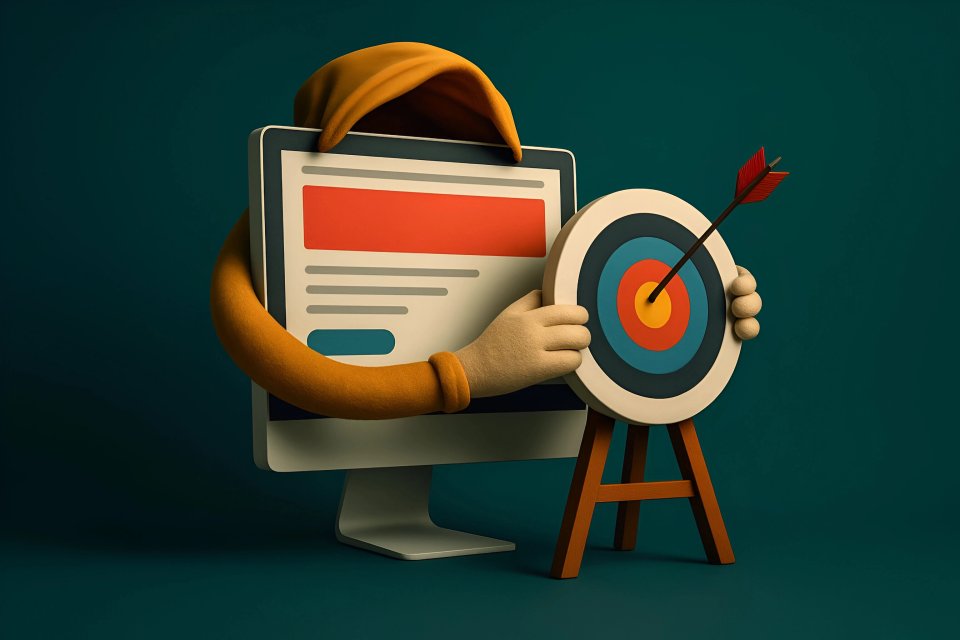Hey there! Carolina Nilsson here, your friendly neighborhood content strategist at CaptivateClick. Ever walk into a room and instantly get a vibe? Maybe it's cozy and inviting, or perhaps sleek and modern. Brands work the same way, especially online where first impressions are made in milliseconds. That initial feeling? That's the power of visual branding hard at work.
In today's incredibly crowded digital world, standing out isn't just nice—it's essential. Your logo and the visual story you tell are your handshake, your opening line, and your promise all rolled into one. They matter more than ever because visuals communicate faster and more emotionally than words alone. Stick with me, and we'll journey through transforming your brand identity, exploring everything from the nuts and bolts of logo design to the art of weaving a compelling visual narrative that truly captivates.
Understanding Brand Identity Fundamentals
So, what exactly is a strong brand identity? Think of it as your brand's personality – the unique combination of values, voice, and visuals that sets you apart. It’s not just about looking good; it's about conveying who you are, what you stand for, and why your audience should care. A truly strong identity resonates deeply and builds recognition over time.
The connection between visual elements and how people perceive your brand is incredibly powerful. Colors evoke emotions, shapes suggest stability or movement, and typography sets a tone – are you playful or professional, traditional or cutting-edge? According to Forbes, visual storytelling is crucial in branding because it helps forge an emotional connection, making your brand more memorable and relatable. Every visual choice sends a message, shaping perception even before a single word is read.
And let's talk consistency. Imagine meeting someone who acts completely different every time you see them – confusing, right? The same goes for your brand. Consistency across all touchpoints, from your website to your social media to your packaging, builds trust and reinforces your identity. As highlighted by Lucidpress, brand consistency can increase revenue significantly because it makes your brand reliable and easily recognizable. Consistency is the glue that holds your brand identity together, ensuring clarity and building loyalty.
The Art and Science of Logo Design
Ah, the logo. It's often the first visual element people associate with your brand, acting as its signature mark. But what makes a logo truly effective? It’s a blend of artistic creativity and strategic thinking.
Essential Elements of Effective Logo Design
First off, simplicity and memorability are key. Think of the most iconic logos – they are often clean, uncluttered, and easy to recall. A complex design might look interesting initially, but it rarely sticks in the mind or reproduces well. Next comes versatility and scalability. Your logo needs to look sharp whether it's tiny on a mobile app icon or massive on a billboard. It must work in black and white as effectively as it does in color. Finally, color psychology and symbolism play a huge role. Colors trigger specific emotions and associations, while shapes and symbols can convey deeper meanings about your brand's values or industry. Choosing these elements thoughtfully is paramount.
Current Logo Design Trends
While timelessness is a goal, it's also helpful to be aware of current trends. Looking at resources like 99designs' logo design trends, we see movements towards things like minimalist geometry, experimental typography, and nostalgic throwbacks. However, I always advise caution here. Chasing trends can lead to a logo that feels dated quickly. It's better to understand trends as reflections of current aesthetics rather than strict rules to follow. The best approach often involves incorporating subtle contemporary touches into a fundamentally classic design.
Common Pitfalls to Avoid
I've seen a few logo design missteps in my time! A major pitfall is making it too complex or overly detailed, which hinders scalability and memorability. Another common mistake is relying too heavily on trends, as mentioned before. Also, be wary of designs that are too literal or generic; your logo should be distinctive. Lastly, neglecting research into your target audience and competitors can lead to a logo that doesn't resonate or differentiate your brand effectively. Avoiding these traps requires careful planning and professional expertise.
Visual Storytelling: Beyond the Logo
Your logo is the headline, but visual storytelling is the entire narrative. It’s about using a consistent suite of visual elements to communicate your brand's personality, values, and promise across all platforms. How do you weave this compelling tale?
Creating a Cohesive Visual Narrative
Think of your brand's visual elements as characters and settings in a story. They need to work together harmoniously to convey a clear and consistent message. This narrative should reflect your core brand strategy – are you innovative and disruptive, or reliable and traditional? Every visual choice, from the filter on an Instagram photo to the font on your website, should reinforce this central theme, creating an immersive brand experience. According to Venngage, visual storytelling helps make complex information digestible and engaging.
Key Components of Visual Storytelling
Several key ingredients make up your visual language:
- Typography: Fonts have personality! Serif fonts often feel classic and trustworthy, while sans-serif fonts can seem modern and clean. The right typography sets the tone instantly.
- Color Palettes: Beyond the logo, a defined color palette brings consistency. Primary colors establish the main mood, while secondary colors add flexibility and hierarchy.
- Imagery and Graphics: Are you using custom illustrations, professional photography, or user-generated content? The style of imagery dramatically impacts your brand's feel. Icons and graphic elements should also align with the overall aesthetic.
- Layout and Composition: How elements are arranged on a page or screen affects readability and visual appeal. Consistent use of white space, grids, and alignment creates a professional and organized look.
Maintaining Brand Consistency Across Platforms
This is where the rubber meets the road. Your carefully crafted visual story needs to be told consistently everywhere your audience encounters your brand – website, social media, email marketing, print materials, you name it. This doesn't mean every post looks identical, but the core visual elements (colors, fonts, logo usage, image style) should remain constant. Lucidpress emphasizes that maintaining brand consistency builds recognition and trust. Develop clear brand guidelines to ensure everyone telling your brand's story uses the same visual language.
The Creative Process
Transforming a brand's visual identity isn't magic; it's a structured creative process. It’s a journey we embark on with our clients, moving from understanding to execution. Let me walk you through the typical stages.
Research and Discovery Phase
This is where it all begins – the deep dive. We immerse ourselves in understanding the client's business, goals, target audience, and competitive landscape. What makes the brand unique? What are its core values? What message does it need to convey? This phase involves workshops, interviews, and market analysis to gather all the necessary insights. Solid research is the foundation upon which a successful brand identity is built.
Conceptualization and Sketching
Armed with insights, the creative exploration starts. This is often a pen-and-paper stage, involving brainstorming, mind-mapping, and sketching initial logo concepts and visual directions. We explore various stylistic avenues, playing with shapes, symbols, and typographic treatments. It’s about generating a breadth of ideas before narrowing down the focus. This raw ideation is crucial for uncovering unique and compelling visual solutions.
Digital Development and Refinement
Promising concepts move from sketches to the digital realm. Using design software, we refine the chosen directions, exploring color palettes, typography pairings, and potential applications. This stage involves meticulous attention to detail, ensuring the logo is balanced, scalable, and visually appealing. We present polished concepts to the client, gather feedback, and iterate until the design perfectly captures the brand's essence. It’s a collaborative process of shaping and perfecting.
Testing and Implementation
Before the big reveal, we test the new visual identity elements across various potential applications. How does the logo look on a website header, a social media profile, or a business card? Does the color palette translate well in print and digital? This ensures practicality and versatility. Once finalized, we prepare all the necessary files and develop comprehensive brand guidelines to guide the implementation phase, ensuring a smooth rollout.
Case Studies
Theory is great, but seeing visual transformation in action is truly inspiring. At CaptivateClick, we've had the privilege of guiding brands through this exciting process. Let's look at a couple of examples.
Successful Brand Transformation Examples
Think about major brands you know – many have undergone significant visual evolutions over time to stay relevant or signal a strategic shift. Analyzing these "before and after" scenarios often reveals a move towards greater simplicity, adaptability for digital platforms, or a clearer reflection of evolved brand values. The impact isn't just aesthetic; successful rebranding can lead to increased market share, improved customer perception, and revitalized employee morale. These transformations demonstrate the tangible business outcomes of strategic visual identity design.
CaptivateClick Client Success Stories
We love helping our clients shine! Take Hawkeye Advertising, for instance. They came to us needing a brand identity that reflected their sharp, results-driven approach in the competitive advertising landscape. You can see their journey and the sophisticated, modern visual system we developed on our Hawkeye Advertising portfolio page. The transformation helped them project confidence and attract higher-caliber clients.
Another fantastic project was with LexEnergy. They required a rebrand that communicated their commitment to innovation and sustainability in the energy sector. We crafted a dynamic and forward-looking visual identity, moving them away from a dated look to one that truly represented their cutting-edge work. Check out the details of the LexEnergy rebranding project here. This new identity positioned them as leaders in their field. These stories highlight how tailored brand identity design services can make a real difference.
Best Practices for Implementation
Okay, you've got a stunning new logo and visual identity system – congratulations! But the work isn't quite done. Rolling it out effectively is crucial for maximizing its impact. How do you ensure a smooth transition?
Guidelines for Brand Rollout
A phased approach often works best. Start with your most visible digital assets, like your website and main social media profiles. Plan the internal launch carefully, ensuring your team understands the 'why' behind the change and feels excited about it. Then, coordinate the external launch across all channels for maximum impact. Clear communication is vital throughout this process, both internally and externally.
Digital Asset Management
Consistency hinges on easy access to the correct assets. Implement a robust Digital Asset Management (DAM) system or even a well-organized shared drive. This central repository should house final logo files in various formats, color codes, font files, image libraries, templates, and the official brand guidelines document. This prevents outdated or incorrect visuals from creeping back in. It makes life easier for everyone involved in creating branded materials.
Training Team Members on Brand Standards
Your team members are your brand ambassadors. It's essential they understand how to use the new visual identity correctly. Conduct training sessions to walk them through the brand guidelines, explaining the rationale behind the choices and demonstrating proper usage. Provide easy-to-reference cheat sheets or resources. Empowering your team ensures brand consistency from the ground up, reinforcing the new identity in every interaction.
Measuring Success
Launching a new brand identity is exciting, but how do you know if it's actually working? Measuring the impact is key to understanding the return on your investment and informing future decisions.
Key Metrics for Brand Identity Effectiveness
While some effects are qualitative, several metrics can indicate success. Track brand awareness through surveys or social listening tools – are more people recognizing your brand? Monitor website traffic and engagement – does the new look correlate with increased visits or lower bounce rates? Analyze lead quality and conversion rates – is the rebranding attracting more qualified prospects? Customer feedback and sentiment analysis can also provide valuable insights into how the new identity is being perceived.
Tools for Tracking Brand Recognition
Various tools can help quantify brand recognition. Google Analytics tracks website interactions, while social media platforms offer analytics on reach and engagement. Social listening tools (like Brandwatch or Mention) monitor online conversations about your brand. Conducting brand recall surveys periodically can provide direct feedback on memorability. Combining data from these sources gives a more holistic picture of your brand's visibility and perception in the market.
ROI of Visual Branding Investments
Calculating the precise ROI of visual branding can be challenging, as it influences many factors indirectly. However, you can correlate the rebranding launch with changes in key business metrics like sales revenue, customer acquisition cost, and customer lifetime value. Attributing shifts in these areas (while considering other market factors) helps demonstrate the financial impact. Remember, a strong brand identity is a long-term asset that builds equity and contributes to sustainable growth, making the investment worthwhile.
Future-Proofing Your Brand Identity
In the ever-evolving digital landscape, a static brand identity can quickly feel outdated. How can you create visuals that last while remaining adaptable for the future?
Adaptability in Design
The key is to build flexibility into the core identity system from the start. This might mean creating logo variations (logomark, wordmark, combination) that work in different contexts. Develop a versatile color palette with primary and secondary options. Choose timeless fonts that offer various weights. Design a system, not just a logo, allowing elements to be rearranged and adapted for new platforms or campaigns without losing core recognition.
Emerging Trends in Visual Branding
Keep an eye on the horizon. Trends like motion graphics and logo animations are becoming increasingly important for engaging audiences in digital spaces. Interactive elements, personalized visuals, and augmented reality experiences are also emerging. While you don't need to jump on every bandwagon, understanding these trends helps you anticipate how visual communication might evolve and plan for incorporating relevant innovations down the line. Staying informed ensures your brand doesn't fall behind.
Maintaining Relevance While Staying True to Core Identity
The ultimate goal is evolution, not revolution (unless a complete strategic pivot is needed). Periodically review your visual identity – does it still align with your brand values and resonate with your target audience? Minor refreshes or updates every few years can keep the brand feeling current without abandoning the recognition you've built. Stay true to your core essence while allowing the visual expression to adapt subtly over time, ensuring long-term relevance and connection.
Conclusion
Wow, we've covered a lot of ground! From understanding the fundamentals of brand identity and the intricacies of logo design to the power of visual storytelling and the practicalities of implementation and measurement, it's clear that transforming your brand's visual presence is a significant undertaking. But as we've seen, it's an investment that pays dividends in recognition, trust, and connection.
Remember, your logo is your handshake, but your overall visual identity tells your brand's unique story. Consistency, strategic thinking, and a focus on your core values are paramount. Whether you're refining an existing identity or building one from scratch, the goal is to create a visual language that truly resonates and endures.
Feeling inspired to evaluate your own brand's visual identity? Take a critical look – does it accurately reflect who you are today and where you want to go? If you feel a transformation is in order, the team here at CaptivateClick would love to help. We specialize in crafting compelling visual identities that make brands stand out.













